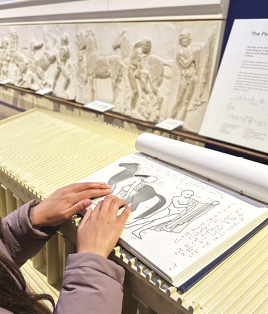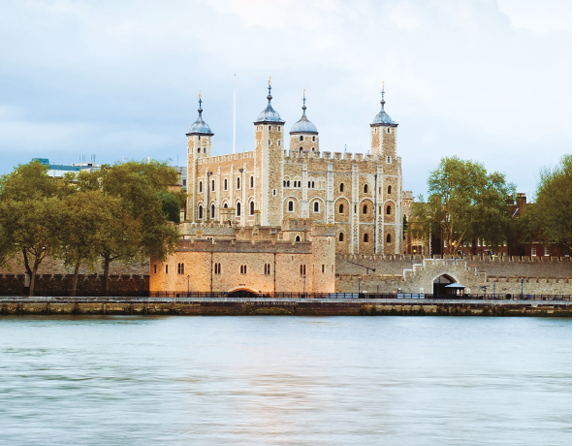Traveling is an educational and stimulating experience for sight-impaired and blind people as well. Today, many European cities (not just the capitals) are well-equipped with both tactile and acoustic crossing aids at traffic lights and on public transportation. If on the one hand it’s always worth traveling to encounter new cultures, taste new traditional foods, and be aware of unique environments, on the other it remains frustrating for the sight-impaired and blind to be unable to fully enjoy the artistic heritage of the country they are visiting. Back in 1998, I was surprised by the presence of a bronze model of Edinburgh Castle on display for a “tactile visit” near the
belvedere where tourists stop to admire the fortress that welcomed the King of Scotland. 
Twenty-five years later, I learned that the British Museum in London had set up a room where blind people could tactilely explore a scale model of the Parthenon in Athens, rebuilt in all the splendour it must have had in the 5th century BC. Casts of the magnificent reliefs created on the marble by the sculptor known as Phidias (c. 490-430 BC), which decorated the frieze on the temple dedicated to the goddess Athena Parthenos, are hung on the walls within easy reach. The sculptures from the Acropolis, removed from their original site and taken to England in the early 1800s, are probably the most famous works of art, and at the British Museum you can see (but not touch) works dating from the Sumerian civilization up to ones from the pre-Columbian Americas and Oceania, including a small moai from Easter Island. It takes more than a day to visit the whole museum, but since there’s free admission, it’s worth going just to visit the sole tactile room (the one devoted to the Parthenon). Just be aware that there might be a long but orderly line at the entrance. Another “must” (a bit expensive, but free for the person accompanying someone with a disability) is the Tower of London, where you can visit the walkways along the walls, a vast collection of weapons, courtyards and buildings where there may be actors telling stories about the castle. Along the sometimes coarse paths, with steep steps, you pass ancient stones, oak doors, and cast iron latches, sense the waters of the Thames, and hear the ominous caws of crows that remind you of people who were imprisoned and executed in the castle. Here and there in the courtyard, within easy reach, are cannons of all shapes and ages. So, the British Museum and the Tower of London are both worth visiting, with or without sight.

But the most exclusive collection, stored in an imposing vault, are the Crown Jewels. Alongside the armoured displays containing gold sceptres and crowns studded with precious jewels, tactile reproductions of royal symbols were added in 2012, as well as models showing how the great Koh-i-Noor diamond was found and cut.

.jpg)



.png)